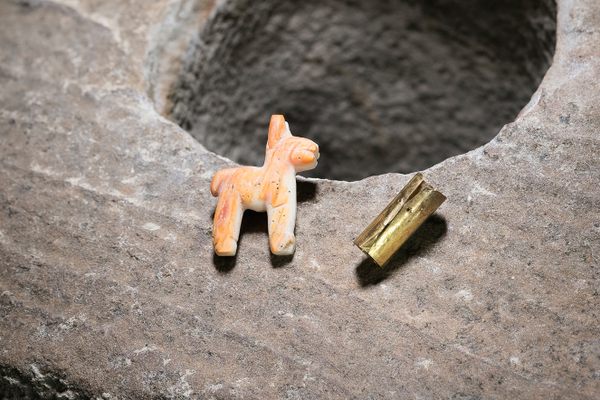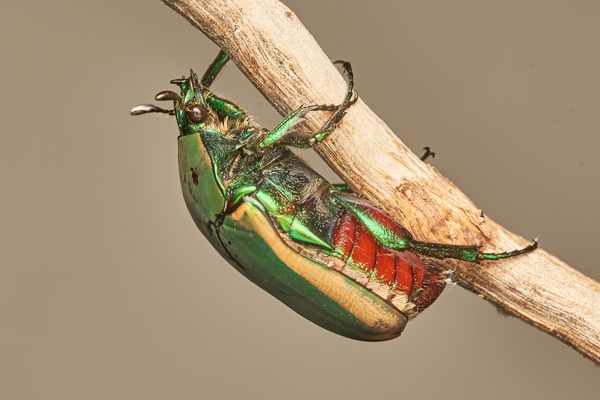Poop-Eating Mites Are Handy Historians
These arthropods can tell us about the causes of animal extinctions.

High up in the Peruvian Andes, the remains of poop-feeding mites have a story to tell. Their populations rose and fell along with those of the Incas and their llamas, according to a study published yesterday in the Journal of Archaeological Science.
In 1993, Alex Chepstow-Lusty, a paleoecologist at the University of Sussex and lead author on the study, began studying the wetland near Cusco known as Marcacocha, taking a sediment core in hopes of learning more about the vegetation that used to sprout in the area. To his surprise, “these mites started falling out” of the core—in pretty good condition, too, though many had lost their limbs over the centuries. They’re “beautiful,” says Chepstow-Lusty of the long-dead arthropods. “I get a personal thrill every time I find one.”
These mites in particular had been hungry—for fecal matter, specifically. Whenever llama feces were sufficiently abundant, they were capable of asexually reproducing in large numbers. Marcacocha used to be a pond, and a popular watering hole for Incan llamas moving through the Andes. Analyzing the various layers within the core, Chepstow-Lusty and his colleagues found that the mite population was high during periods of Incan habitation, and low following the Spanish conquest of the area. As Science explains, the Spanish conquest killed many of the Incas and their animals, in turn leaving less food for the aquatic mites. The mite population eventually rebounded after cows and pigs were introduced to the area, but it sank again following an 18th-century smallpox epidemic.

The finding is significant, says Chepstow-Lusty, because it may provide a new method for studying animal extinctions and their underlying causes. Much previous research has focused on fungal spores known as Sporormiella, which grow on herbivore feces and so, like the mites, can illustrate changes in those species’ populations. At Marcacocha, however, the Sporormiella population only tells part of the story. While it also fluctuated, it did not do so in accordance with historical events, but instead with environmental occurrences, such as the retraction of the pond during dry periods favorable to the fungus—a relevant, but incomplete record.
Chepstow-Lusty hopes that the study will encourage researchers to look beyond Sporormiella when studying the downfalls of animal populations around the world, including Vikings’ sheep in Greenland, or reindeer in Norway. Analyzing different kinds of poop-feeders, it seems, can help distinguish between the environmental and historical factors at play. It’s not clear, he says, whether the mites technique will translate beyond small lakes like Marcacocha. What is clear is that these mites are more than what they eat.










Follow us on Twitter to get the latest on the world's hidden wonders.
Like us on Facebook to get the latest on the world's hidden wonders.
Follow us on Twitter Like us on Facebook